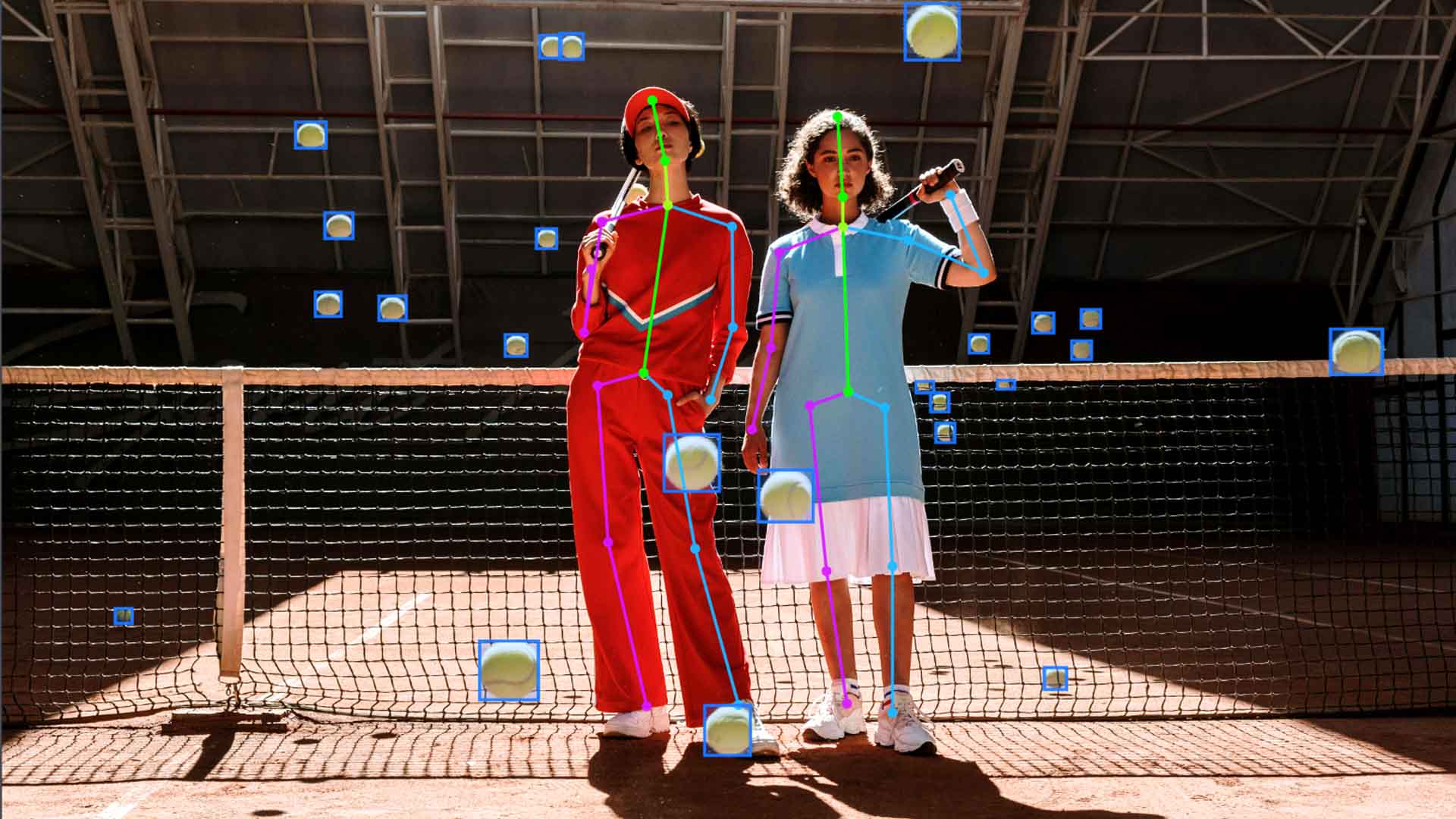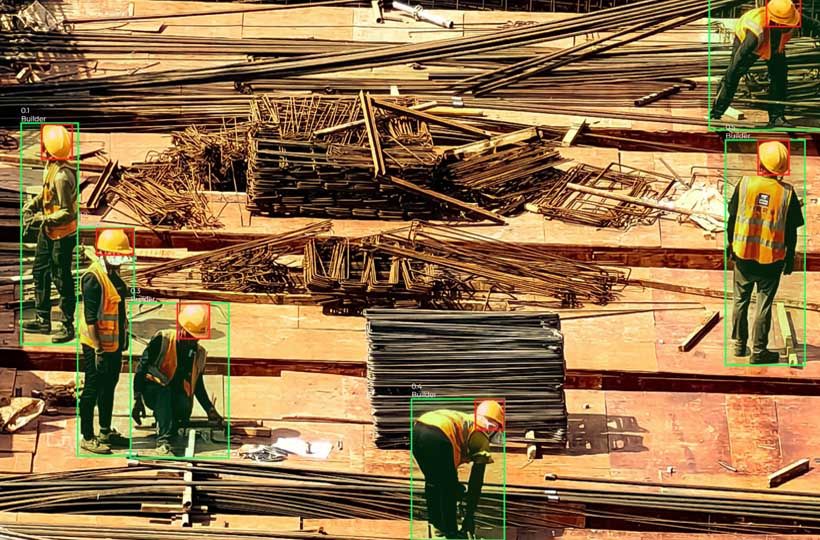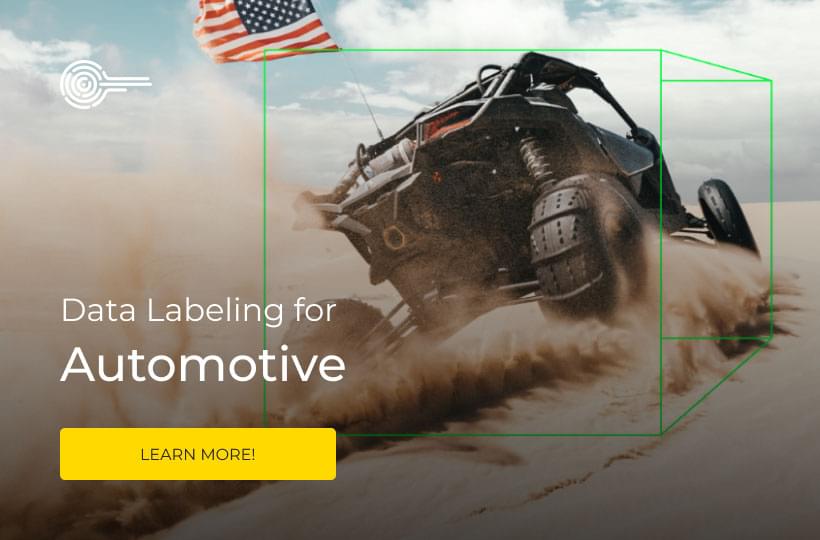Top Beginner Machine Learning Projects to Elevate Your Skills

Machine learning is a rapidly growing field that requires hands-on experience to truly master. If you're a beginner looking to enhance your skills in machine learning, these top beginner machine learning projects are perfect for you. With a focus on practical applications and easy-to-understand concepts, these projects will help you gain a solid foundation in machine learning and pave the way for more advanced projects in the future.
Let's dive into the details of these beginner machine learning projects.
Key Takeaways:
- Embark on your machine learning journey with these top beginner projects.
- Gain hands-on experience in applying machine learning algorithms to real-world problems.
- Choose a project aligned with your interests and goals to enhance your learning experience.
- These projects cover different domains and difficulty levels, allowing you to explore various aspects of machine learning.
- Build a solid foundation in machine learning with practical applications and easy-to-understand concepts.

Machine Learning Tools and Technologies Required for Projects
Before diving into the projects, it's essential to familiarize yourself with the tools and technologies commonly used in machine learning. Python is the most popular programming language for machine learning projects, thanks to its simplicity and the availability of libraries like TensorFlow and PyTorch. Other languages like R and Julia are also used in specific domains.
Libraries and frameworks like TensorFlow, Keras, and Scikit-learn are essential for building and training machine learning models. These tools provide a wide range of pre-built algorithms and functions that simplify the development process.
Data visualization is a crucial aspect of machine learning projects, and tools like Matplotlib and Seaborn help in visualizing data patterns and relationships. These libraries enable you to create visual representations that aid in understanding and interpreting complex datasets.
When it comes to coding and experimentation, integrated development environments (IDEs) play a significant role. Jupyter Notebook is a popular choice among beginners as it allows for code execution and documentation in a single interface. Other IDEs like PyCharm provide advanced features for debugging and project management.
Processing large datasets is a common challenge in machine learning, and big data technologies come to the rescue. Tools like Apache Hadoop and Apache Spark provide distributed computing frameworks that enable efficient processing of massive amounts of data.
Machine learning platforms like AWS SageMaker and Google Cloud AI Platform simplify the development and deployment of machine learning models. These platforms offer pre-configured environments, storage, and scalable computing resources, making it easier to experiment and deploy models in production.
Version control and collaboration are essential when working on machine learning projects. Tools like Git and GitHub help in managing and sharing code among team members. They provide a centralized repository for tracking changes, collaborating on projects, and ensuring the integrity of the codebase.
By familiarizing yourself with these tools and technologies, you'll be well-equipped to tackle machine learning projects with confidence and efficiency.
Machine Learning Tools and Technologies for Beginners:
| Tool/Technology | Key Features |
|---|---|
| Python | Simple syntax, rich libraries |
| TensorFlow | Deep learning framework |
| PyTorch | Flexible and dynamic neural network library |
| R | Statistical computing and graphics |
| Julia | High-level programming language for technical computing |
| Matplotlib | Data visualization |
| Seaborn | Statistical data visualization |
| Jupyter Notebook | Interactive coding and documentation |
| PyCharm | Integrated development environment |
| Apache Hadoop | Distributed data processing |
| Apache Spark | Distributed data processing and analytics |
| AWS SageMaker | Machine learning platform on AWS |
| Google Cloud AI Platform | Machine learning platform on Google Cloud |
| Git | Version control |
| GitHub | Code hosting and collaboration |
Iris Flower Classification
The Iris flower classification project is a classic and widely-used project in machine learning. It involves categorizing iris flowers into three species - setosa, versicolor, and virginica - based on the size of their petals and sepals. This project is perfect for beginners as it introduces them to basic classification algorithms in machine learning.
The dataset used for this project contains four features: sepal length, sepal width, petal length, and petal width. By applying classification algorithms like logistic regression or decision trees, beginners can learn how to accurately classify iris flowers based on these features. The Iris flower classification project provides a solid foundation for understanding and applying classification techniques in machine learning.
Classification Algorithms Used in Iris Flower Classification
Classification algorithms play a crucial role in the Iris flower classification project. They enable the categorization of iris flowers into different species based on their physical characteristics. Here are some of the commonly used classification algorithms in this project:
- Logistic Regression
- Decision Trees
- K-Nearest Neighbors (KNN)
- Support Vector Machines (SVM)
- Random Forests
These algorithms analyze the given dataset, learn patterns, and create models that can accurately classify iris flowers based on their features. By comparing the features of an unknown iris flower with the trained model, these algorithms can predict its species with a high degree of accuracy.
Here is an example of how the classification algorithms work in the Iris flower classification project:
| Sepal Length | Sepal Width | Petal Length | Petal Width | Species |
|---|---|---|---|---|
| 5.1 | 3.5 | 1.4 | 0.2 | setosa |
| 6.3 | 3.4 | 5.6 | 2.4 | virginica |
| 5.8 | 2.7 | 4.1 | 1.0 | versicolor |
In the table above, each row represents an iris flower with its corresponding features and species. The classification algorithms analyze these features and create a model that can accurately classify iris flowers. For example, based on the given data, the algorithm can learn that an iris flower with a sepal length of 6.3, sepal width of 3.4, petal length of 5.6, and petal width of 2.4 belongs to the species 'virginica'.
The Iris flower classification project is an excellent starting point for beginners in machine learning. It not only introduces them to classification algorithms but also provides hands-on experience in working with real-world datasets. By mastering the Iris flower classification project, beginners can develop a strong foundation in classification techniques that can be applied to various other projects and domains.
House Price Prediction
The house price prediction project aims to forecast the selling prices of houses based on various features such as area, number of bedrooms, and location. This project involves solving a regression problem, which allows beginners to understand how different property features impact the market value of houses. By exploring and analyzing the dataset, beginners can build regression models to accurately predict house prices.
One of the key benefits of this project is that it helps beginners gain insights into the relationship between the input features and the target variable, which is the house price in this case. It also introduces beginners to various regression models, enabling them to understand and compare different approaches for predicting house prices.
House price prediction is a critical task in the real estate industry, as it helps property buyers, sellers, and investors make informed decisions. By undertaking this project, beginners get the opportunity to apply their machine learning skills to a real-world problem and contribute to the field of real estate.
To successfully complete the house price prediction project, beginners need to work with a dataset that includes relevant features like area, number of bedrooms, location, and other factors that influence house prices. By processing and analyzing this data, they can gain valuable insights into the predictive factors and build accurate regression models to forecast house prices.
Beginners can explore various regression techniques such as linear regression, decision trees, random forests, or even more advanced methods like gradient boosting or neural networks. Each technique has its own strengths and weaknesses, and beginners can compare their performance to determine the most suitable regression model for their specific project.
Dataset Example:
| Area (sq. ft.) | Number of Bedrooms | Location | House Price (USD) |
|---|---|---|---|
| 1500 | 3 | New York | 550,000 |
| 2000 | 4 | Los Angeles | 750,000 |
| 1200 | 2 | Chicago | 400,000 |
By analyzing a dataset similar to the example above, beginners can identify patterns and correlations between the input features and the house prices. They can then use this knowledge to build regression models that accurately predict house prices for new instances based on the available features.
Overall, the house price prediction project is an excellent opportunity for beginners to apply their machine learning skills to a real-world problem in the real estate industry. By successfully predicting house prices, beginners can gain valuable experience and demonstrate their ability to tackle regression problems in machine learning.
Human Activity Recognition Dataset
The human activity recognition dataset involves identifying the physical actions performed by individuals based on sensor data collected from smartphones or wearable devices. This project is essential in applications like fitness tracking and patient monitoring. By working on this project, beginners can gain insights into handling time-series sensor data and applying machine learning algorithms to recognize different activities.

The dataset used in this project contains accelerometer and gyroscope data, along with activity labels like walking, sitting, and standing. Through this project, beginners can enhance their skills in processing time-series data and developing models for activity recognition.
To get started with the human activity recognition dataset project, beginners can follow these steps:
- Import the dataset into a programming environment like Python.
- Explore the dataset to understand its structure and the available features.
- Preprocess the data by cleaning, normalizing, and transforming it into a suitable format.
- Split the dataset into training and testing sets.
- Select and implement machine learning algorithms for activity recognition.
- Evaluate the performance of the models using appropriate metrics.
- Fine-tune the models and experiment with different algorithms to improve accuracy.
- Deploy the trained models to recognize activities in real-time data.
Working on the human activity recognition dataset project will provide beginners with valuable experience in data preprocessing, feature selection, model training, and evaluation. It will also contribute to their understanding of time-series data analysis and the challenges associated with activity recognition in real-world scenarios.
Example:
| Accelerometer X | Accelerometer Y | Accelerometer Z | Gyroscope X | Gyroscope Y | Gyroscope Z | Activity Label |
|---|---|---|---|---|---|---|
| -0.536764 | -0.200439 | -0.221313 | 0.058319 | 0.055945 | 0.038299 | Walking |
| 1.300201 | 0.991432 | 0.491577 | 1.070969 | -0.627182 | -0.820251 | Sitting |
| -0.020508 | 0.019043 | -0.989746 | -0.100876 | -0.003494 | -0.001480 | Standing |
| 0.304947 | -0.786133 | 0.473633 | -0.367386 | -0.494292 | -0.168503 | Walking |
Example dataset for human activity recognition
By analyzing and modeling the provided sensor data, beginners can train machine learning models to accurately predict the activity labels based on the accelerometer and gyroscope readings. This project not only enhances skills in activity recognition but also provides a solid foundation for handling time-series sensor data in various domains.
Stock Price Prediction
Stock price prediction is a challenging project that aims to forecast future stock prices based on historical data and other market indicators. This project introduces beginners to the complexities of predicting stock prices, which are influenced by various factors and can be highly volatile. By analyzing historical price data and incorporating technical indicators, beginners can build machine learning models to predict stock prices and make informed investment decisions.
Stock price prediction requires advanced techniques like time series analysis and pattern recognition, making it an exciting project for beginners looking to enhance their machine learning skills in the finance domain.
To get started with stock price prediction, beginners can follow these steps:
- Collect historical stock price data for the target company or companies. This data can be obtained from financial websites or APIs that provide historical financial data.
- Preprocess the data by removing any outliers or missing values, and normalize the data if necessary. This step ensures that the data is clean and suitable for analysis.
- Explore and visualize the data to gain insights into stock price trends and patterns. This can be done using data visualization libraries like Matplotlib and Seaborn.
- Choose suitable machine learning algorithms for stock price prediction. Popular algorithms include linear regression, support vector machines, and recurrent neural networks.
- Split the data into training and testing sets. The training set is used to train the machine learning model, while the testing set is used to evaluate its performance.
- Train the chosen machine learning model using the training data. Adjust the model's hyperparameters and validate the model's performance using cross-validation techniques.
- Test the trained model on the testing data and evaluate its performance using appropriate evaluation metrics such as mean squared error or R-squared value.
- Use the trained model to make predictions on new, unseen data and assess its accuracy. Continuously refine and improve the model based on feedback from prediction results.
Popular Machine Learning Algorithms for Stock Price Prediction
| Algorithm | Description |
|---|---|
| Linear Regression | A basic algorithm that models the relationship between the input features and the target variable as a linear function. |
| Support Vector Machines | An algorithm that finds the best hyperplane that separates the data points into different classes. |
| Recurrent Neural Networks | Neural networks specifically designed for processing sequential data, which can capture patterns and dependencies over time. |
By following these steps and using appropriate algorithms, beginners can explore the fascinating world of stock price prediction and gain valuable insights into the financial markets. Developing accurate stock price prediction models requires continuous learning and refinement, as the financial markets are complex and ever-evolving. With practice and experience, beginners can become proficient in this domain and make informed investment decisions based on their machine learning models.
Conclusion
These top beginner machine learning projects provide an excellent opportunity for beginners to elevate their skills in machine learning. By working on these projects, beginners can gain hands-on experience in applying machine learning algorithms to real-world problems. The projects cover a range of domains and difficulty levels, allowing beginners to explore different aspects of machine learning.
Choosing a project that aligns with your interests and goals will enhance your learning experience and set you on the path to becoming a proficient machine learning practitioner. So, start with these beginner projects and embark on your journey to mastering machine learning. Happy coding!
FAQ
What are beginner machine learning projects?
Beginner machine learning projects are projects designed for individuals who are new to the field of machine learning. These projects provide hands-on experience and help beginners enhance their skills in machine learning.
Why should I work on beginner machine learning projects?
Working on beginner machine learning projects allows you to gain practical experience and build a solid foundation in machine learning. These projects focus on practical applications and easy-to-understand concepts, making it easier for beginners to grasp the fundamentals of machine learning.
What are the tools and technologies required for machine learning projects?
Commonly used tools and technologies for machine learning projects include programming languages like Python, R, and Julia, libraries such as TensorFlow and Scikit-learn, data visualization tools like Matplotlib and Seaborn, integrated development environments (IDEs) like Jupyter Notebook and PyCharm, big data technologies like Apache Hadoop and Apache Spark, machine learning platforms like AWS SageMaker and Google Cloud AI Platform, and version control and collaboration tools like Git and GitHub.
What is the Iris flower classification project?
The Iris flower classification project involves categorizing iris flowers into three species based on the size of their petals and sepals. This project introduces beginners to basic classification algorithms in machine learning and provides a solid foundation for understanding and applying classification techniques.
What is the house price prediction project?
The house price prediction project focuses on predicting the selling prices of houses based on various features like area, number of bedrooms, and location. It is a regression problem that helps beginners understand how different property features impact their market value and introduces them to various regression models.
What is the human activity recognition dataset project?
The human activity recognition dataset project involves identifying the physical actions performed by individuals based on sensor data collected from smartphones or wearable devices. This project helps beginners gain insights into handling time-series sensor data and developing models for activity recognition.
What is the stock price prediction project?
The stock price prediction project aims to forecast future stock prices based on historical data and other market indicators. It helps beginners understand the complexities of predicting stock prices and introduces advanced techniques like time series analysis and pattern recognition.




